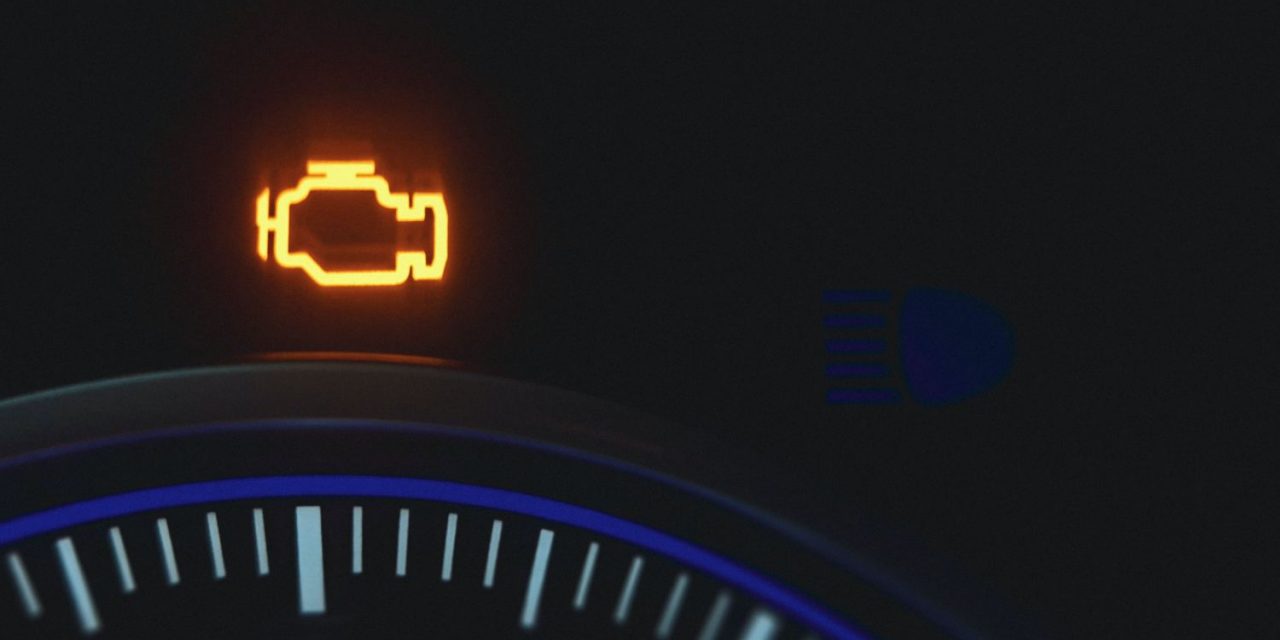I get commissions for purchases made through links in this post.
Your car’s check engine light is meant to be a warning that something is wrong with your vehicle, but it can be a tricky thing to decipher. Is it something serious that needs to be addressed immediately, or is it a false alarm? And how do you even go about resetting the light?
Luckily, there are a few simple steps you can follow to figure out what the problem is and get your check engine light back to normal. So next time you’re staring at that dreaded illuminated check engine light, take a deep breath and follow these steps.
First, we will be talking about how to clear the code, and then later in the article we will discuss what might be causing the check engine light, and even how to resolve it.
- 1. Fix the concern and let it turn off on its own
- 2. Clear the code via OBD-II
- 3. Cut power to the vehicle via the battery
- 4. Start your car four times
- How do you know what is wrong with your car, that causes the check engine light?
- What are common reasons why a check engine light (CEL) would be on?
- What does yellow check engine light mean?
- What to do if the check engine light comes back on
- The consequences of not clearing a check engine light
- Does the engine light come on if you need oil?
- Conclusion
1. Fix the concern and let it turn off on its own

The check engine light will often turn off after you fix the issue that caused it. Whether this be replacing things like the gas cap, or even replacing a transmission or engine, once the concern is completely resolved, the computer will run its diagnostics, find the issue as resolved and clear (but still store) the code on the computer.
Generally speaking, this does require you to drive the vehicle for some time, so you need to make sure that whatever concern was causing the code is now resolved, as you do not want to drive the vehicle if it was something that could cause catastrophic failure.
2. Clear the code via OBD-II
If you have an OBD-II scanner, you can use it to clear the check engine light. The OBD-II scanner port is generally in the footwell of your vehicle, and you can easily connect a scanner like this one (Paid Link) to your car (I have a regular scanner, but I also have a phone based scanner, which is much more comprehensive in its capabilities, it is one like this one (Paid Link) . Once you connect the scanner to your vehicle, you turn your car to the “On” position, and you are able to gain access to the vehicle’s computer.
Every OBD-II scanner will have a clear codes section, which allows you to clear all active codes on your vehicles computer. You can select that, and it should turn off your check engine light code. Keep in mind though, if you don’t fix the problem with your vehicle, the code will pop back on as soon as the vehicle realizes that the problem is persisting.
If what I just talked to you about scares you, you can always visit your local chain auto parts store like Autozone, as they keep OBD-II scanners on hand, and should be able to help you complete this step.
3. Cut power to the vehicle via the battery
The check engine light is controlled by the computer, which gets its power from the battery. If you disconnect the battery, it will cut power to the computer and reset it.
Never cut power to your battery before? Here is a quick how-to for you:
There are a few things you need to do before disconnecting your car battery. First, make sure that your car is turned off and that no electronics are running. Next, locate the negative terminal of the battery.
This is usually labeled with a minus sign (-) or a black cap. Once you have found the negative terminal, use a wrench to loosen the nut or bolt that is holding the cable in place.
Then, slide the cable off of the terminal. Be careful not to let the cable touch any other metal parts of the car, as this could cause a short circuit. Finally, repeat these steps for the positive terminal.
Once both cables are disconnected, you can safely remove the battery from your car.
By the way, the Optima battery to the left here (Paid Link) is an awesome option if you are wanting to go ahead and replace your battery while you are at it.
4. Start your car four times

If your check engine light is on, and you can’t figure out why (as you already fixed the concern), start your car four times in a row as this may cause your vehicle to reboot its computer. On the fourth start, the check engine light should turn off.
While this is an option on most vehicles, it is also one of the most unreliable ways of getting the codes to turn off.
Alternatively, if you have a newer vehicle, some of them are able to reset codes on their own! Each vehicle is different, so make sure to read through your user manual to see if you car can do it, and how.
How do you know what is wrong with your car, that causes the check engine light?
- Check the vehicle with an OBD-II – We talked about how an OBD-II scanner is able to clear the codes that cause a check engine light earlier in this article. However, their primary purpose is to read the existing codes, and let you know what they mean. Less expensive scanners will only give you the code it is throwing as a 5 character code that starts with a “P”. You can then put that code into a search engine to find articles discussing your specific code. Alternatively, if you have a nicer scanner, it will likely be able to tell you on the scanner itself what the code means.
- Take your vehicle to the shop – Every repair facility should be able to tell you exactly what is wrong with your vehicle, and why it has the check engine light is on. They have much better versions of an OBD-II that will give comprehensive information, and be able to pinpoint what is wrong. They of course will also offer (for a fee) to resolve that issue, and get the light to turn off.
- Listen to your vehicle – There are many reasons why a check engine light may be on, so before you start spending money, just listen to your vehicle. You will want to see if there are any odd noises coming from it, and if there is, see if it is something you can resolve on your own.
- Tighten your gas cap – The most common reason why (as we will learn in a moment) a check engine light is on, is a bad or loose gas cap. Gas tanks are pressurized, and when a gas cap is loose or incorrectly screwed onto the vehicle, that pressure is not able to build. Tightening your gas cap is where you should start your journey.
What are common reasons why a check engine light (CEL) would be on?
1. It’s probably your gas cap
This by far is the main reason why your gas cap is likely on, and thankfully it is also the easiest to resolve! As we mentioned in the section above, your gas tank is a pressurized device, and the gas cap is a bit part of keeping that at pressure.
When a gas cap is compromised by either damage, or just by being loose after your last fill-up it can easily cause your check engine light to turn on. That is why, if you do see that light go on, check your gas cap and tighten it down so that it clicks at least once to see if that gets the light to turn off.
If that doesn’t work, and you test your vehicle with an OBD-II to find that it it is an EVAP trouble code, then you might want to opt for replacing the gas cap all together. You can easily purchase one right here! (Paid Link)
2. Something is up with the ignition
Now, if you have ruled out the gas cap as the issue (whether it be replacing it, or testing it with an OBD-II to find it isn’t an EVAP code), then it could have to do with the ignition of the vehicle. This could range from spark plug wires, spark plugs themselves, or even the battery. These all are generally an issue that can be resolved by a complete tune-up of your vehicle, which is probably in order at this time.
Another thing that could cause the vehicle to not get a healthy ignition is bad gas, if you have recently tried a new gas station in your area, and the light turned on soon after that, you might have bad gas in your tank that is either contaminated, or has water in it.
3. Emissions issue
Another common issue that can cause your check engine light to turn on has to do with the emissions of the vehicle. It could be the mass air flow sensor, O2 sensor, or more commonly your catalytic converter. Unfortunately that last one can prove to be quite expensive to replace, so hold off on making that repair until you rule everything else out.
4. A larger issue
Now, if you have ruled everything else out, it could be a bigger deal than just a simple problem. It could be that you overheated your transmission or engine. It could be many other things that are a bigger problem. At this point, you might want to consult a mechanic to get their thoughts, if you haven’t already.
- TOP 8 MOST RELIABLE USED PICKUP TRUCK ENGINES
- YOUR VEHICLE’S AIR FILTER NEEDS CHANGED MORE: HERE IS HOW OFTEN!
- TOP 4 REASONS CARS GET BETTER GAS MILEAGE ON THE HIGHWAY
What does yellow check engine light mean?
When the check engine light comes on, it usually means that there is a problem with the engine. However, it can also indicate other problems, such as a loose gas cap or a faulty oxygen sensor.
In any case, it is important to take the check engine light seriously and have the problem diagnosed as soon as possible. Ignoring the light could lead to more serious issues, such as engine damage or reduced fuel efficiency. So if you see that little light come on, be sure to take your car to a mechanic and get it checked out.
What to do if the check engine light comes back on
If you clear the check engine light and it comes back on, there is still a problem with your car. The best thing to do is take it back to the mechanic or dealership and have them check it out. They will be able to diagnose the problem and let you know what needs to be done to fix it.
The consequences of not clearing a check engine light
If you don’t clear a check engine light, it could lead to more serious problems with your car. For example, if the check engine light is on because of a faulty oxygen sensor, Ignoring the light could damage the catalytic converter, which is a costly repair.
So it’s always best to take care of the problem as soon as possible. It could also result in worse damage to your vehicle as you go on, so make sure to stop and think, or take your vehicle to a shop to have it checked out if your CEL jumps on.
Does the engine light come on if you need oil?
The Check Engine Light will only come on due to low oil if it is causing a different issue, such as damaging components within the vehicle. Rather, the low oil light will come on when you get low enough on oil, however this should show up before any damage is done to your vehicle.
Conclusion
A check engine light can be annoying, but it’s important to take it seriously. If you’re not sure what the problem is, take your car to a mechanic or dealership and have them check it out. And if you do know what the problem is, be sure to clear the check engine light as soon as possible. Ignoring the





